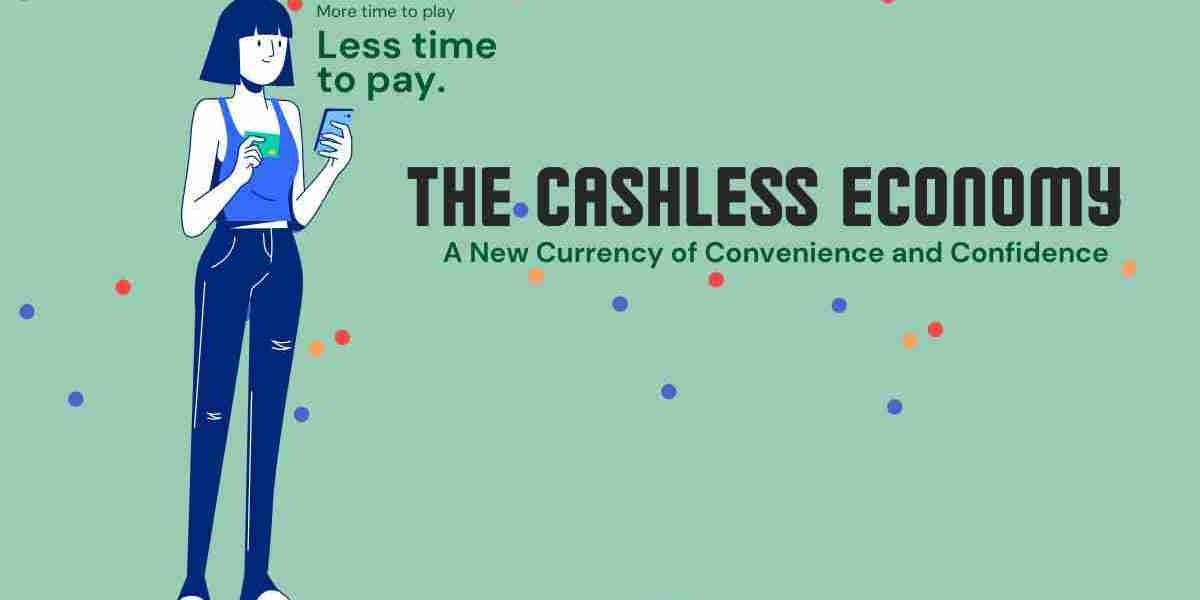What Is a Cashless Economy?
A cashless economy is one in which financial transactions are executed digitally—without the use of paper money or coins. Instead of exchanging physical currency, consumers and businesses use technologies such as:
- Debit and credit cards
- Mobile wallets (like Paytm, Google Pay, PhonePe)
- Unified Payments Interface (UPI)
- Internet banking
- QR codes
- Aadhaar-enabled payment systems
- Contactless payment systems like NFC and smart cards
This transition is not merely about convenience—it signifies a broader shift toward digitized trust, enhanced traceability, and economic modernization.
What Is a Cashless Economy?
A cashless economy is one in which financial transactions are executed digitally—without the use of paper money or coins. Instead of exchanging physical currency, consumers and businesses use technologies such as:
- Debit and credit cards
- Mobile wallets (like Paytm, Google Pay, PhonePe)
- Unified Payments Interface (UPI)
- Internet banking
- QR codes
- Aadhaar-enabled payment systems
- Contactless payment systems like NFC and smart cards
This transition is not merely about convenience—it signifies a broader shift toward digitized trust, enhanced traceability, and economic modernization.
Why the Push Toward Cashless?
Several factors are accelerating the global shift to cashless economies:
- Efficiency: Digital transactions are faster, reducing wait times and paperwork for businesses and consumers alike.
- Security: No need to carry physical cash decreases the risks of theft and loss.
- Transparency: All digital transactions leave an audit trail, reducing the scope for corruption and black money.
- Financial Inclusion: With a smartphone and internet access, anyone—regardless of geography or socio-economic status—can participate in the digital economy.
- Cost-Effectiveness: Handling and printing currency is expensive. A digital system reduces logistical costs associated with minting and transporting cash.
India’s Journey to a Cashless Future
India’s push toward a cashless society has been particularly bold and multifaceted. The 2016 demonetization was a critical inflection point, nudging millions toward digital payment platforms. Government-led initiatives like Digital India, Jan Dhan Yojana, and the launch of UPI provided fertile ground for technological adoption.
Today, India witnesses:
- Over 13 billion monthly transactions through UPI.
- Growing penetration of QR-code-based payment systems in tier-2 and tier-3 cities.
- Increased usage of Aadhaar-linked bank accounts for direct benefit transfers (DBTs).
What makes India’s journey truly remarkable is not just the scale, but the bottom-up adoption—from vegetable vendors to big retail chains.
The Technologies Powering a Cashless Economy
A cashless system depends on a host of technologies that make digital payments seamless, secure, and scalable:
1. Unified Payments Interface (UPI)
Developed by the National Payments Corporation of India (NPCI), UPI enables real-time bank-to-bank transfers using a mobile number or virtual payment address. It’s fast, secure, and interoperable.
2. QR Code Payments
Merchants can generate a QR code linked to their bank account, allowing users to scan and pay within seconds.
3. Near-Field Communication (NFC)
Used in smart cards and tap-to-pay systems, NFC makes contactless payments possible in seconds.
4. Biometric Authentication
Tools like Aadhaar enable authentication using fingerprints or iris scans—vital for secure and inclusive digital finance.
5. Blockchain and Cryptocurrencies
While still nascent in many parts of the world, blockchain technology is poised to add transparency and security to digital finance, and it may eventually redefine currency itself.
Benefits of a Cashless Economy
Let’s unpack the real-world impact of going cashless:
1. Increased Transparency
Governments benefit from reduced tax evasion and better monitoring of financial activity. It promotes a culture of accountability.
2. Enhanced Convenience
No need for ATMs, no queues, no searching for change. Paying bills, shopping, splitting dinner bills—everything becomes faster and frictionless.
3. Economic Boost for Small Businesses
Micro-entrepreneurs and local vendors can tap into broader markets, receive instant payments, and even access credit via digital history.
4. Emergency Response and Direct Transfers
During crises like the COVID-19 pandemic, digital infrastructure enabled swift direct benefit transfers and contactless aid distribution.
5. Reduced Crime and Corruption
With fewer untraceable cash transactions, illicit activities face a steeper challenge. This also leads to cleaner governance.
Challenges on the Road to Going Fully Cashless
Despite the progress, several hurdles remain:
1. Digital Illiteracy
In many rural and semi-urban areas, lack of digital knowledge makes people vulnerable to fraud or causes them to resist adoption.
2. Cybersecurity Threats
As reliance on digital platforms increases, so do phishing attacks, identity theft, and online frauds. Constant vigilance and regulation are crucial.
3. Infrastructure Gaps
Remote regions may lack reliable internet connectivity or access to smartphones—core prerequisites for digital participation.
4. Data Privacy Concerns
Cashless systems leave digital footprints. Without strong data protection laws, there's a risk of misuse or surveillance.
5. Habitual Resistance
Some individuals and businesses continue to prefer cash for reasons of trust, simplicity, or tax avoidance
Global Trends and Comparative Insights
Countries like Sweden and China have raced ahead in building cashless societies. In Sweden, nearly 85% of all transactions are digital. China’s mobile payment ecosystem, powered by WeChat Pay and Alipay, processes billions in daily payments, even in street markets.
These examples show that with the right infrastructure, education, and incentives, a cashless model can be inclusive and transformative.
The Future: Is a Fully Cashless World Inevitable?
It might not be about if but when. As digital natives (millennials and Gen Z) become economically dominant, the preference for digital payments over cash is only going to accelerate. Trends to watch include:
- Digital currencies issued by central banks (CBDCs)
- Voice-activated payments and AI-driven financial advisors
- Integration of fintech apps with healthcare, insurance, and government services
- Expansion of international remittances via blockchain and crypto systems
These developments signal a world where cash may become as archaic as postal stamps or floppy disks.
Conclusion: Navigating the Shift with Wisdom and Care
A cashless economy isn’t just about eliminating paper money—it’s about elevating financial systems to be more transparent, efficient, inclusive, and innovative. But progress must walk hand in hand with protection. Building trust, educating the masses, enhancing cyber-resilience, and ensuring universal access must remain top priorities.
As we surf this digital wave, we are not just changing how we pay—we’re redefining how we value trust, speed, safety, and inclusion in the economy.









